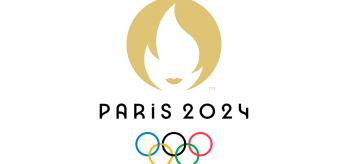In this article, we delve into how goals were scored and ball in play time, while the role of the goalkeeper in breaking lines is also examined.
In our subsequent articles, we take an in-depth look at winning team, the USA, with TSG members Anna Signeul and Kirsty Yallop, and explore the key components of their in-possession and out-of-possession game that emerged as winning characteristics throughout the tournament. In addition, when compared to the FIFA Women’s World Cup 2023™, it was noted that centre-backs were significantly more influential in breaking opposition lines with forward passes.
Goals Scored Breakdown
A total of 72 goals were scored from attempts at goal (excluding three own goals and one from a block) during the Women’s Olympic Football Tournament, illustrating a 9.8% conversion rate from 732 attempts at goal. As expected, the conversion rate for attempts made inside the penalty area was higher (12.2%) with 55 goals scored while just 17 goals were scored from outside the penalty area with a 6.1% conversion rate from 280 attempts at goal.
An average of 2.9 goals were scored per match during the tournament but the knockout stages were tighter affairs, with an average of just 1.9 goals per game compared to 3.4 in the group stages. In comparison, there were 2.6 goals per game scored during the FIFA World Cup 2023.
Excluding penalties (4), a total of 12 goals were scored from set play first contacts or attempts at goal directly from (4 corners, 7 freekicks, 1 throw in) but, interestingly, all were scored in the group stages, with no goals from set plays (excluding one penalty) in the knockout phase. Just 5.5% of goals scored came from first contacts following attacking corners and this represents a decrease when compared with the FIFA Women’s World Cup 2023 where 8.3% of all goals scored were from corners.
When our Football Performance Insights Team investigated the football events that preceded a goal being scored, it was noted that goalscorers receiving the ball from passes accounted for the highest proportion at 34.2%. Interestingly, almost half (46.2%) of all goals scored in the knockout stages followed a pass to the goalscorer compared to 31.7% in the group stages.
The variety in how teams are scoring goals comes as a result of having higher quality in the final third but also because defensively teams are so resolute and organised, as Gemma Grainger explains.
“Teams are continuing to develop variety when attacking in the final third and have good ways of building goalscoring opportunities. Sides have a greater focus on creating high-quality chances and this is helping to develop attacking strategies and the technical attributes of players. They are faster, playing off triggers, and can use minimal touches when in and around the penalty area. Compact and organised defences are forcing attacking players to improve their ability to play in tighter spaces under pressure while attacking players are also more proactive in making forward runs.”
Ball in play time
The amount of time the ball is in play during a match is important when considering the physical outputs of players and there was a slight increase in the Women's Olympic Football Tournament 2024 where it was 57.3 minutes (excluding extra-time), compared to FIFA Women’s World Cup 2023. However, the fluctuation between the average time the ball spent in play in the group stages (58.3 minutes) compared to the knockout stages (52.6 minutes) is a discussion point. Again, the average ball in play time in the group phase is higher than recent FIFA senior women’s tournaments, but the average of 52.6 minutes recorded in the knockout stages is lower.
According to FIFA’s Chief of Global Football Development, Arsène Wenger, “We observed in some games that there were stoppages for goalkeeper injuries. These treatment breaks were also used as coaching interventions and at times really changed the momentum in the games. These breaks in play slowed the games down and allowed tactical changes or adjustments to be made and this was difficult for referees to manage.”
When neither team has control of the ball, it is ‘in contest’ and during the Women's Olympic Football Tournament 2024, the average ball in contest time per match (excluding extra-time) was 6.4 minutes. Again, there was a slight difference during the group stages where the ball was deemed in contest for an average of 6.1 minutes per game compared to 8.1 minutes in the knockout stage.
Possession Share And Phases Of Play
The data relating to distribution of possession in matches during the Women’s Olympic Football Tournament 2024 showed that only three teams, semi-finalists Spain (63.1%), winners USA (57.77%) and quarter-finalists France (53.82%) consistently dominated possession in their matches. All other teams, over the course of all their games played, averaged less possession share than their opponents, including runners-up Brazil (38.26%) and semi-finalists Germany (41.77%).
In-possession phases of play
In addition to understanding teams’ possession shares, knowing the time they spend in different phases of play can give an interesting insight into their playing styles, highlighting their preferences when in and out of possession. Our Football Performance Insights Team can also compare data sets across other competitions, and this helps us to identify trends that are emerging overall and in the evolution of different teams.
In the Women's Olympic Football Tournament 2024, the USA tended to dominate possession in their games and spent a large proportion (57.1%) of their in-possession time in the build-up phase. This exceeds the tournament average of 44.1% and is also much higher than the average in the FIFA Women’s World Cup 2023, where teams averaged 39.6% of their in-possession time in the build-up phase. In addition, the USA were the second-lowest ranked team for time spent in the long-ball phase (1.8% versus the tournament average of 3.1%) and the attacking transition phase (12.8% versus the tournament average of 18.3%).
Runners-up Brazil demonstrated how different styles of play can be very effective, with their transition style. At the Olympics, they were the joint-highest ranked team (with Zambia) on 26.5% for time spent in the transition to attack phase and they were second-highest with 1.9% (behind Zambia with 3.5%) for proportion of in-possession time spent in the counter-attack phase.
Spain, with 30%, spent the highest amount of their in-possession time in the final third phase by quite some distance when compared to the tournament average of 15% and second-highest ranked team France with 18%. Furthermore, they were second highest for build-up phase (53.3%), demonstrating their desire to patiently build their attacks. This is reinforced by the fact they were the lowest ranked team for in-possession time spent in long ball (0.5%), attacking transition (12.1%) and counter-attack (0.5%) phases.
Out-of-possession phases of play
When teams did not have the ball, they also had clear defensive styles and strategies. Spain were the highest ranked team for out-of-possession time spent in the high block (12.3%), high press (5.6%) and defensive transition (26.2%) phases, and were second-highest for the counter-press phase (16.6%), demonstrating their front-footed, aggressive defensive approach.
By contrast, Germany were the second-lowest ranked team for out-of-possession time spent in the high-press (1.8%) and counter-press (10.8%) phases while they were second-highest ranked for out-of-possession time spent in the mid-block phase.
Japan were the highest-ranked team in the mid-block metric, spending 32.1% of their out-of-possession time in this phase compared to the tournament average of 20.9%. They demonstrated preferences for defending in organised defensive phases, ranking lowest of all teams for out-of-possession time spent in counter-press (9.5%) and defensive transition (12.5%) phases.
Additionally, Colombia ranked highest for time spent in the low block phase (30.3%) and were lowest for the high block phase (3.4%).
Goalkeepers
Attempting and completing more line breaks
During the tournament our Technical Study Group noted the increased importance of line-breaking passes from goalkeepers. While the topic was explored in detail in a full article, here we examine the topic using the full tournament data, which fully supports the noted trend.
During the Women's Olympic Football Tournament 2024, goalkeepers attempted an average of 15.9 line breaks per 30 minutes in possession compared to 13.9 in the FIFA Women’s World Cup 2023™. Their success rates also improved, with 43.3% of attempted line breaks completed successfully in the Olympics 2024 versus 38.4% in the Women’s World Cup 2023.
Notably, goalkeepers attempted more line breaks through the opposition’s team shape, with 1.16 per 30 minutes in possession during the Olympics, compared to 0.4 (P30IP) during the World Cup. The success rates for these passes also increased from 81% to 91% in 2024.
Key Take-aways
- Almost half (46.2%) of all goals scored in the knockout stages followed a pass to the goalscorer compared to 32.2% in the group stages.
- While a tournament average ball in play time of 57.3 minutes (excluding extra-time) was recorded, the average of 52.6 minutes recorded in the knockout stages is lower than in recent tournaments.
- Only three teams, semi-finalists Spain (63.1%), winners USA (57.77%) and quarter-finalists France (53.82%) consistently dominated possession in their matches throughout the tournament.
- Teams progressed to the latter phases of the competition using different dominant in and out of possession phases.
- Goalkeepers attempted and completed more line breaking passes in the Olympics 2024 compared to the FIFA Women’s World Cup 2023.

























